
Circling Schiphol | An adventurous cycle tour
- Sectie
- Luchthaven
- Doen
- Fietsroutes
- Tijs van den Boomen
- Fietsverkenningen
- MRA
The best way to explore Schiphol? By bicycle, of course! Circle the airport and discover powerguzzlers and vanished villages, old forts and new churches, giant warehouses and pocket parks. A narrow corridor meandering between the motorway and a runway, makes even the epicentre accessible: Schiphol Plaza. You'd be hard-pressed to find that anywhere else in the world.
The airport's impact on its surroundings is enormous. International headquarters, distribution companies, hotel chains, freight forwarders, data centres, taxi companies: they all descend on it like flies on molasses. Bringing in their wake infrastructural bundles and parking lots, repair shops and detention centres, fast-food restaurants and spotter zones.
Van den Boomen got on his bicycle and found a landscape full of contrasts: a little shack in which bands perform opposite a huge warehouse more than a hectare in size, a sign 'keep clear for fire brigade' right next to the monument for the victims of the Schiphol fire, a listed farm building dating from 1860 just around the corner from a brand-new prison, an uninhabited insect hotel in between huge distribution warehouses.
Van den Boomen got on his bicycle and found a landscape full of contrasts
The airport's impact on its surroundings is enormous. International headquarters, distribution companies, hotel chains, freight forwarders, data centres, taxi companies: they all descend on it like flies on molasses. Bringing in their wake infrastructural bundles and parking lots, repair shops and detention centres, fast-food restaurants and spotter zones.
Circling Schiphol is a cycle route that takes in lots of Extra Extra Extra Large with a pinch of Small here and there. Most of the route runs on paved, tiled or cobbled roads, but there are also stretches of sand road, shell path, dirt road and even an escalator. A word of warning: this is a working area, so roadworks are part of the deal, as are cycle paths that suddenly end as well as makeshift roads. So sometimes, you'll have to improvise.
You can start at any point, for example in one of the places you can rent a shared bicycle. If you only want to cycle a part of the route, FlickBike is recommended (one euro per half hour, many pick-up and drop-off locations). For the entire route, a public transport bicycle (ov-fiets) makes more sense (3.95 per day, Schiphol Plaza and Hoofddorp train station). Or you could use your own bicycle of course (for Amsterdammers, Badhoevedorp beach is the best starting point, see point 5).
The route is a total of 42 kilometres long, but you can take a shortcut in four places, which makes a difference of ten kilometres. Don't feel like cycling? The Connexxion Circle Line will take you around the airport in 45 minutes (line 180 clockwise, line 181 anti-clockwise).
Click here for the Cirkellijn
Circling Schiphol
An adventurous cycle tour through an unknown world

1. Fly & Bike
Plaza is the shining epicentre of the airport, where all traffic flows converge: airplanes, trains, buses, taxis, cars. And bicycles as well: the Sheraton Hotel even has lockers where you can hire public transport bicycles. That is, if there are any available, because there are only four of them. Around the corner is Transportstraat (indeed meaning transport street), where, very appropriately, the signposted cycle path system starts. Here, too, is the monument to the first Amsterdam-Batavia flight in 1924.
Follow the cycle signs to Badhoevedorp. West 8's landscape architects have planted hundreds of thousands of birches at Schiphol. The birch is not sustainable, but it is safe because birds cannot sit on the 'short, swaying branches'. Moreover, they have 'a fresh modern look'.

2. Art Tunnel
Originally, the tunnel beneath the Buitenveldertbaan had 146 windows, but these were boarded up by order of the fire brigade. To ease the pain, photos of views that were never here now hang in the window frames.
Turn left into the bicycle tunnel running underneath the A4 motorway, which is a lot more prosaic: gloomy and dark. On your left, you will see one of the three Schiphol fire stations (Post Sloten), next to this, the Schiphol Judicial Complex.

3. Bajes
The concrete exterior walls of the judicial complex, whose architect wishes to remain anonymous due to threats from action groups, look like filigree lacework. Their function is less delicate: to keep almost a thousand inmates inside. Asylum seekers are housed here, but also criminals such as Ridouan Taghi on days when he has to appear in court in the bunker in Osdorp. Typically Dutch, a bus stops right outside the front door here.
Turn right and cycle down Sloterweg, through a gate which is always open, past the new military constabulary barracks, and then the vastness of the polder opens up in all its glory. This is one of the east-west polder roads of the Haarlemmermeer. Schiphol has wanted to build a second terminal here for a long time.
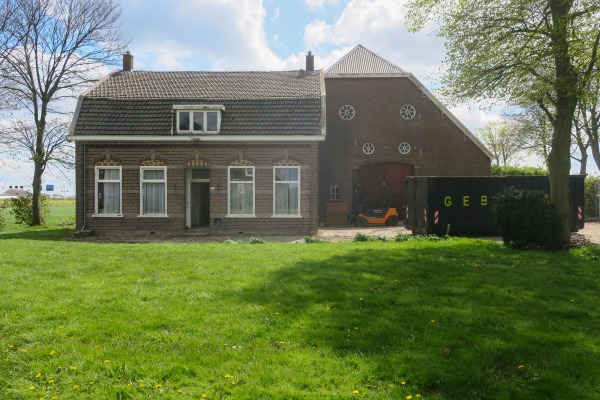
4. Notary's House
Number 347 is a farmhouse dating from 1860 which has been given the status of a municipal monument; directly opposite, at number 326, there is a much more monumental farmhouse from 1900 which is vacant and has to make do without protection. The former owner's grandson is ‘investigating with the municipality what he is allowed to do with it’. Should he knock it down and build a notary's house, as the neighbour at number 330 did in 2020?
Take the viaduct over the diverted A9 motorway and cycle through Badhoevedorp, a road that is still bustling with hotels, holiday flats, a taxi company and shops. Traditionally, businesses in the Haarlemmermeerpolder are located along the east-west roads and farms are located along the north-south roads. At the crossroads, on the left is a café-restaurant (which once started out as a dairy) and on the right is a car company (traditionally a blacksmith).
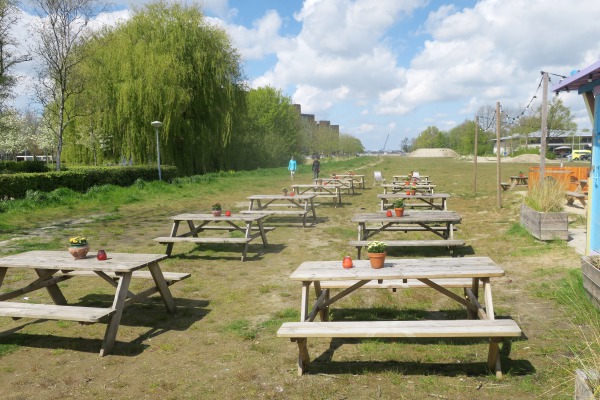
5. Beach
Up to 2017, the A9 motorway ran across this elongated grassy plain; soon it will be home to Het Lint, a green link between two new estates yet to be built. In the meantime, there is room here for temporary facilities such as café-restaurant Q Beach, A9 vegetable gardens and the emergency classrooms of the Rietveld school.
Turn right at the church, left at the end onto Schipholweg and cycle past the sports fields, which have to make way for an estate of 500 to 700 houses with gardens. The land proceeds are needed to pay for the A9 diversion.

6. Cinema
A Boeing 747 in the backyard - Corendon director Atilay Uslu wouldn't settle for anything less. It is a nice calling card for the hotel with 680 rooms and a cinema, the only one in Badhoevedorp.
Through another tunnel, this one also decorated (gates with punched-out flight numbers and red stripes above your head), past a strip of hotels (with an Ibis advertising column showing the current room rate), then right at the second traffic light.

7. Bus Node
This aircraft hangar was built in England at the beginning of the Second World War, moved to Rotterdam in 1958 and has been used as ‘Knooppunt Schiphol Noord’ ('Schiphol North Node') since 2015. Twenty-two bus lines stop here, including the Circle Line, which circles Schiphol.
No, not on to the spotter zone opposite McDonald's (unless you are irrepressibly hungry), but back to Schipholweg and turn right. On your right, a group of old trees, remnants of the farm that stood here until the late 1940s.

8. Ridges
Stop at the yellow landing lights placed on either side of the road. This is a much better location to watch the planes landing on the Buitenveldertbaan than the official spotter zone. In fact, here, they come in so low, you can almost feel them. To the left in the meadow lie man-high, grass-covered dike bodies. They look remarkably like the noise-reduction ridges in Park Buitenschot near the Polderbaan, but these have a different function: soil was left over after digging water storage ditches and had to be neatly tidied away.

Onwards again, along Schipholweg, through two filthy tunnels underneath a complicated junction, past the fences marking the widening of the A9, shortly to the left at the Ringvaart canal.

9. The Origin
A mooring dolphin with the letters F, O, R and T on it indicates where the Fort along Schiphol once stood. In 1844, eleven years before the land was reclaimed, it was built on an artificial island in the Haarlemmermeer, but was already demolished in 1934. The accompanying military airbase was successful, however.
Back a bit, turn left at the Schiphol-Oost sign and you are back in the world of the heir of the former military airbase. Complete with waving birch trees and fresh bicycle sheds. Turn right and then immediately left onto Goede Ree.

10. Airboat
The tail piece of a Fokker 70 rests on a base that looks a bit like a ship's bow. A rather odd combination from a transport point of view, but aesthetically it works wonderfully well. It marks the old Schiphol Airport control tower, which is now the Wings Café.
Continue cycling, with the Oostbaan to your right. This is Schiphol Airport's oldest runway, where nowadays mainly private planes take off, which also manage to make an impressive amount of noise. Turn left and then right (into a street called Stationsplein Zuid-West) and after the footbridge that runs high over the road, immediately turn left, then right at the Ringvaart, under the impressive legs of raised Fokkerweg along the water.

"Concrete eyebrows keep out the sun"
11. Egg Carton
Schiphol does not engage in monument conservation, but because buildings basically remain standing as long as they are usable, you can still find some old-fashioned architectural gems here. Such as the ‘egg carton’, an example of sustainable building dating from 1983. According to architect Joan Overhoff, ‘the concrete eyebrows’ above the windows keep out the sun in summer and let it in unhindered in winter. The position of the concrete elements differs per facade.
_Follow the Schipholdijk along the Ringvaart. After a few hundred metres, the cycle path widens to become the road it used to be, when there was no Fokkerweg running underneath. _
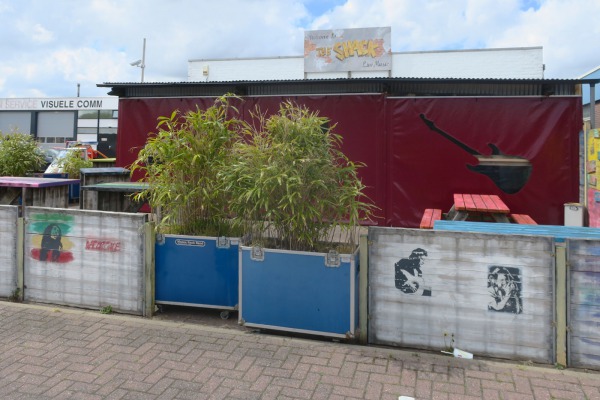
12. Guitar Bands
This old-fashioned clutter corner continues for a while, culminating in music café The Shack, indeed positioned in a shack. Rian and Berry only open their café when they've got a guitar band. Check it out at The Shack.
Take the first road to the right, turn left along Fokkerweg until after 500 metres, the cycle path suddenly ends. Walk carefully through the verge for 30 metres, then across the Shell station and cross at the traffic lights. Keep to the outer edge of the bland business park (everything in two stories, brown brick and corrugated sheet metal) until you reach a small bicycle bridge. Cross the bridge, turn left, and the cycle path soon turns into a footpath. Walk to the narrow gap between the fences. What? Are you allowed to go through here? Want to take a short cut? Cycle straight along the dike to point 15.
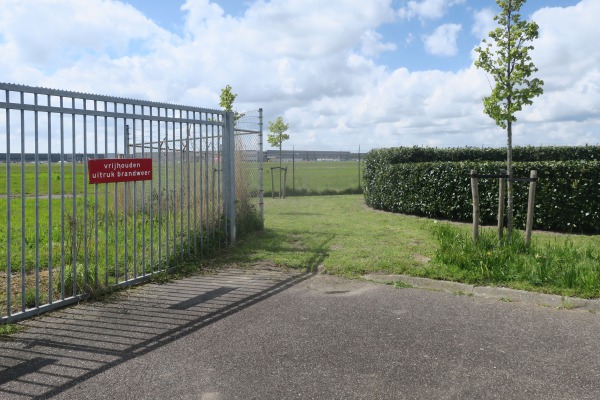
13. Schiphol Fire
To the left of the tiled path is a high fence with a red sign reading ‘vrijhouden uitruk brandweer’(keep clear for fire brigade) and a large padlock. The gate on the right is also locked. Right in front of you is the monument with the names of the nine men and two women who lost their lives in the fire at the Schiphol cell complex in 2005.
Retrace your steps, follow the water past a Fokker F27 Friendship on a stick. Cross and then follow Fokkerweg to the left, take the first right (you were here before) and immediately turn right again.

14. Parallel World
Ten Pol is the name of the small road parallel to the Ringvaart canal, with small businesses on it, some villas, a horse paddock and, above all, many garages and sheds belonging to the houses on the dike. Partly paved, partly cart track. At the end, turn left, back to the Ringvaart canal, past a dilapidated factory, and at house numbers 97 and 98 turn right again, back onto Ten Pol. It looks like the road just ends in a yard, but you can actually continue over the grass strip. Keep going!
Back on the dike, cycle on towards Bolstra pumping station.

15. Water Wolf
At the pumping station, look to the left: on the opposite side, there appears to be one of those neatly tended fields, where peat used to be dried to make turf. But appearances can be deceiving: this is the roof of the Waterwolftunnel leading the N201 underneath the Ringvaart. The name recalls the old Haarlemmermeer nickname: the water wolf that threatened Amsterdam.
Immediately after the pumping station, turn right, follow bicycle junction 65 and cycle along Fokkerweg until you reach a viaduct on your right that runs underneath the N201.
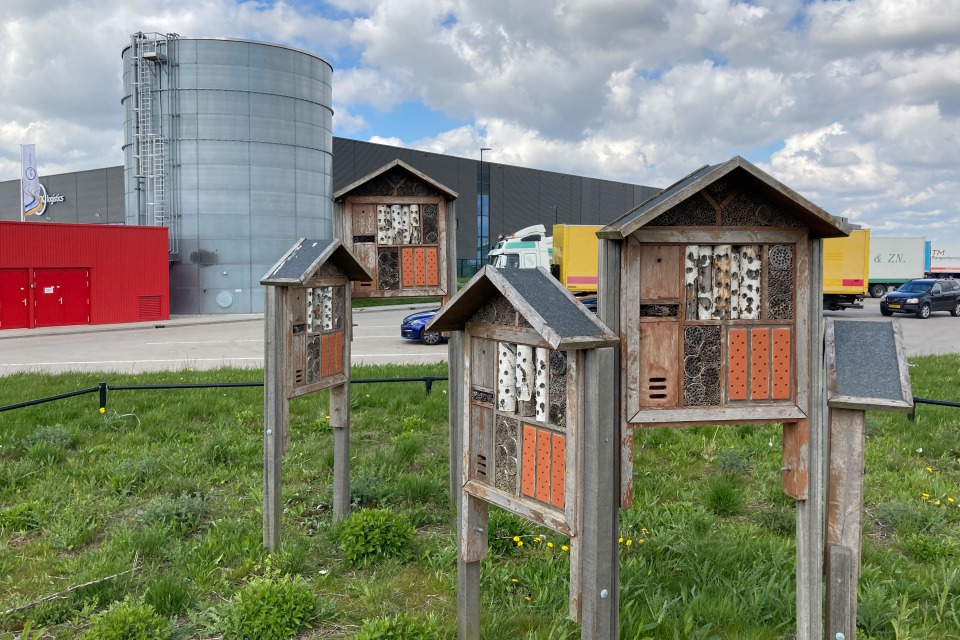
16. Insect Hotel
Green Mountains Logistics Park is located in the armpit of Aalsmeer- and Kaagbaan. You enter the terrain through a narrow gorge cut out between two distribution warehouses. One such warehouse can hold over three football fields, and there are four of these giants. Everything is big here. Well, not quite everything: on a small hill in the middle of the site, five insect hotels are situated. They are vacant.
Turn around, cycle underneath the viaduct, turn right onto Fokkerweg, follow the bend until you see an earthen mound with, that's right, birch trees on your right (turning onto Fokkerweg from Koolhavenlaan).
17. Invisible Parking
At Schiphol Rijk (now called RichPort) they like it tidy. The slogan? Thriving community. Where do you leave all those trucks before and after loading and unloading? The gigantic car park, hidden from view by green mounds, is almost completed. If the Second Kaagbaan goes ahead, the N201 will be demolished and these trucks will be parked right up against the runway.
Continue along Fokkerweg and, at the first road on the right (Sikorskylaan), cycle along the shell path that runs alongside a romantic water feature with willows. This is the walkway for office staff and for tourists from the nearby hotels. A wooden bridge leads back to Fokkerweg, cross this. A second wooden bridge takes you deeper into RichPort. Navigation is difficult here (almost all streets here are called Boeing Avenue), keep to the right a bit until you reach a parking lot (opposite Boeing Avenue 1). Want to take a short cut? Stay on Fokkerweg and cycle on to point 19.
The building may not be beautiful, but it is big

18. Poot's Church
**The building of the Levend Evangelie Gemeente (the Living Gospel Church, popularly known as 'the LEG') may not be beautiful, but it is big: holding a thousand seats. This Pentecostal church was designed and built by Jan Poot, the notorious project developer behind Chipshol, who died in 2018. **
Continue to Kruisweg, turn right, left again at the crossing (careful at the road works) and, according to the place name sign, you are entering the village of Rozenburg (in fact, you just stay on Schiphol Rijk).
19. Power Guzzler
The building on the corner, like most nameless boxes you'll come across along the way, is a power-hungry data centre. This is Interxion 5 (surface area 2.7 hectares, power 31.3 megawatts), which, with a pattern of zeros and ones on its facade, at least makes some effort to express itself. Its completely anonymous neighbour Interxion 6 (2.9 hectares, 32.5 acres) has just been completed. Schiphol Rijk houses more than half of Haarlemmermeer's data capacity, making it one of three places in the region with 'hyperconnectivity'.
Turn left at the roundabout, pass a neat little park carved out between the fences and then cross a small bridge that, according to a proud sign, is made of biological composites. It contrasts distinctly with the sharp expanded metal fences.
20. Ringdijk Park
**Stick your head around the corner of the curved noise barrier and you have an unobstructed view of the back of the Ringvaart - the clutter is a relief. The sleek geometric strip in the foreground was designed in consultation with the residents by Delva's landscape architects. **
Keep to the right, follow the shell path and pass through the sheep fence to reach the dike again. Turn right and cycle past the gold mine of a house at number 432, which was declared uninhabitable. At number 438, farm and wedding venue De Arendshoeve is located (holding up to a thousand guests). You can make a U-turn across the grounds, with surprising contrasts between old and new.
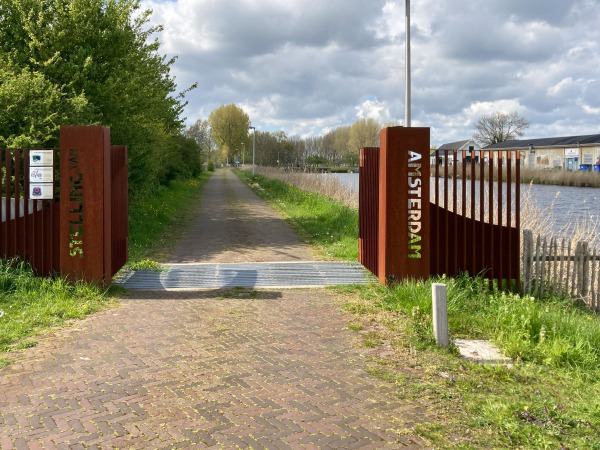
21. Shooting Gallery
The former Fort near Aalsmeer now houses a fort farm and the air war museum. Shooting still goes on here, nowadays at shooting club De Meerschutters, who are based in an old bunker. Boats used to be able to enter the polder here via a double lock, but since 1966, a concrete culvert has blocked all but the water.
Turn right, cycle around the fort with the double moat and follow the Geniedijk, a main defence line of the ‘Stelling van Amsterdam’. This twelve-kilometre long dike enabled the flooding of the southern part of the Haarlemmermeer polder in case of emergency.
22. Willage Protest
‘Rijsenhout says NO to 150 kV’, it says on a banner on the Geniedijk. 150 kV is the abbreviation for a transformer station that has been the subject of dispute for years. The activists have already managed to stop two proposed locations close to their village. The fact that the station is now to be situated on the industrial estate on the other side of the Geniedijk, close to the data centres it is to supply, does not make them any happier. Exaggerated? Many Rijsenhout residents still hold a grudge about the demolition of the village of Rijk, where they come from.
Turn left into dead straight Aalsmeerderweg, with old greenhouses on either side. Want to take a short cut? Stay on the Geniedijk and cycle on to point 28.
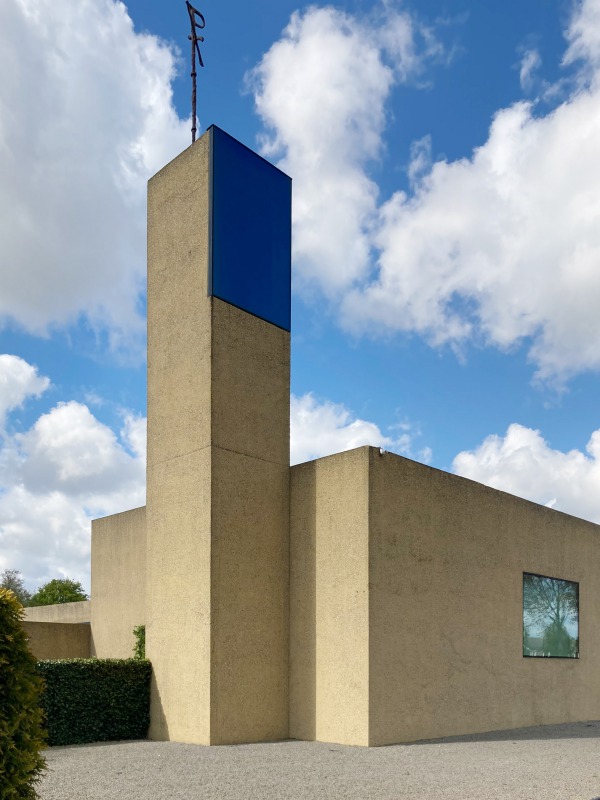
23. Compensation Church
The website of Het Lichtbaken (The Light Beacon) sparingly announces: 'Opinions differ about whether it is beautiful or ugly, even within our own municipality'. The design by Claus and Kaan Architects certainly is distinct. The building was erected in 2006 by Real Estate Schiphol to compensate for the old church in Rozenburg, which was located three kilometres up this same road and had to make way for the noise from the Kaagbaan.
Continue along Aalsmeerbaan, past the new greenhouses of Schenkeveld, a Westland greenhouse farm. Already impressive now, this year an 11 hectare greenhouse will be added. And another next year. Then there will be enough room for 1.7 million vine tomato plants.
24. Neighbourhood Fruit Trees
Compared to Schenkeveld's considerable size, the fruit garden laid out in the elongated walking park between the greenhouses and the road is very modest. Eight trees have now been planted and another 120 are yet to be added, which can be adopted by residents under the motto 'greening and connecting'.
Cycle straight on, turn right at a gravel path, continue to the end, on your left you will see the private gardens of Van der Valk with ponies, goats and romantic sheds. At the end, turn left into the parking lot (you can cycle around the barriers).
25. Bridge Restaurant
Along the A4 motorway, there is an entire complex to pamper the passing motorist: hotel, petrol station, rapid chargers, car wash, flex work area, meeting rooms, casino, clothes shop and five different fast food restaurants in a bridge building over the motorway. And this bridge building offers an excellent opportunity to cross.
The open revolving door is wide enough to let a bicycle through. Go up the escalator, through the restaurant, then take the ordinary stairs down again (just carry the bicycle) and go through the revolving door. Behind the rapid charging station, an actual cycle path starts, it even has a name: 'Rijksweg A4 pad'. After the viaduct, follow the path to the left, then take the first right (ignore the fence and the concrete sewer pipes across the road, they are only meant to stop cars).

26. Future Fuelling
**The DCB Energy filling station lies in the plain like a mirage. Equally surreal are the sustainable fuels they sell here: AdBlue, CNG+, LNG en HVO 100. Ordinary mortals can fill up here with Euro 95, which is 22 cents cheaper per litre here than at the Total station on the A4. **
Continue along Nelson Mandeladreef, follow the bend, cross the intersection and then, after the sign Eigen weg (Private road), take the first right into Contour Avenue.
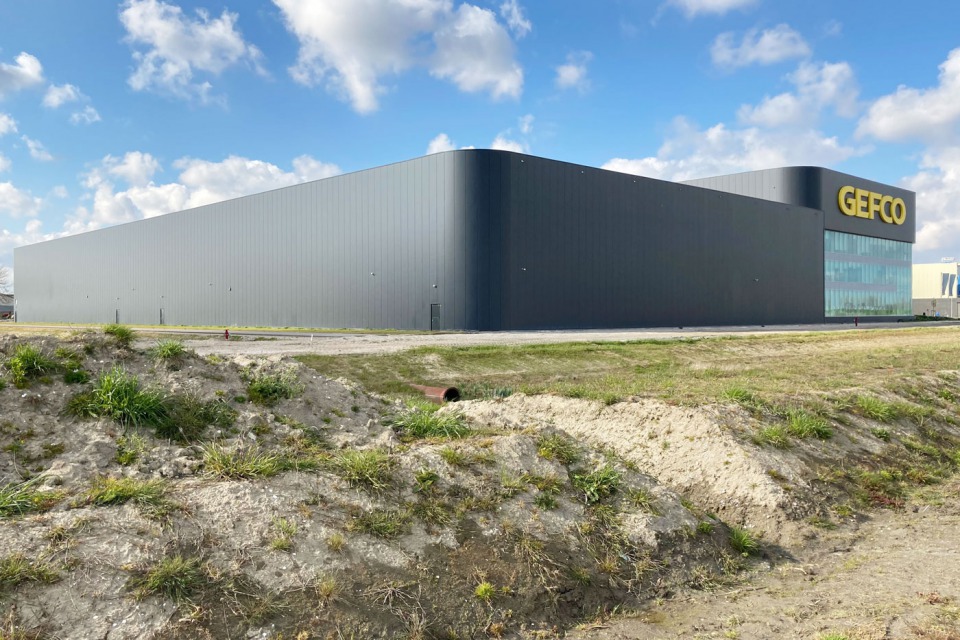
27. Scalelessness
The billboards at Schiphol Trade Park promise 'the most sustainable and innovative business park in Europe'. A series of distribution warehouses is under construction; data centres will follow later. Gefco's black distribution warehouse is already finished. To get an idea of its size, check out the little door in the corner. People are dwarves here.
Contour Avenue becomes a dirt road, just keep going, follow the bend, turn right at Rijnlanderweg, and there, at the fort, is the Geniedijk again. Cross the dike and turn left.
28. Roof Park
At Park 20|20, sustainable ambitions reach even higher. In its own words, it is 'the world's first cradle-to-cradle optimised working environment'. The greenery is in order, the cars are hidden away under a roof park. But wait a minute: how circular are private cars in a concrete car park?
At Hoofddorp station, go underneath the railway tracks, turn right past a grimy bicycle shed, then take the first road to the left (Planetenweg).

29. Gerritshoeve
**On the corner lie the foundations of an old new farm. Or rather the other way round: a new old one. This is the ultimate cradle to cradle: a late nineteenth-century barn, which was located near the Polderbaan, is being rebuilt here 'while retaining its sullen appearance'. De Gerritshoeve will be a sustainable café-restaurant aimed at the Hyde Park estate which is under construction, a project by architect Gijs de Waal. He previously set up Hannekes Boom en Bret in Amsterdam. **

Follow the road past a colourful totem pole (a dismountable kiosk, designed by Bureau SLA), follow the bend to the right and then take the first right (Jupiterstraat). You are now leaving the ruins of the former Beukenhorst West office park behind you. Soon, the 3,700 luxury flats (and 120 social housing units) of the Hyde Park estate (MVRDV urban design) will be situated here. At the point where Jupiterstraat bends to the left, cycle straight ahead onto the cycle path behind the hotels, cross the four-lane road, follow the cycle path, pass under the railway tracks and, with a right turn, enter the Beukenhorst Oost office park. Ignore the dull architecture and poor art, follow Antareslaan, which the cycle path extends into, turn left at the end, cross busy Kruisweg, then take the first right (Hoeksteen). Want to take a short cut? Follow Van Heuven Goedhartlaan, turning right into Kruisweg until you reach point 30.
30. Polder Boulders
At the end of the 1960s, De Hoek was the first business park at the Hoofddorp side of Schiphol, but only a few shabby factory buildings with asbestos roofs still remind us of that. Nowadays, this is a sample card of half a century of business premises. The elongated green strip along the full length of De Hoek rises slightly above ground level: this is the slope of the old railway line between Hoofddorp and Aalsmeer. Sleepers have made way for meandering shell paths and reddish boulders. Boulders in the polder? That's something future archaeologists will have to wonder about.
Follow the green strip until the cycle path ends at the motorway.
31. Double-barreled Cannon
**At and around Schiphol Airport, there are huge advertising masts, often equipped with LED screens to show changing advertisements. To stand out within this visual violence, Hillenaar set up the Twins: two billboards that fire messages in sync, in the armpit of the A4 and A5 motorways (3.3 million passers-by every fortnight). **
Turn right and then immediately left underneath the viaduct (the columns here are covered in posters, very classically stuck on with wallpaper glue), turn left again. The sign 'Eigen weg' (Private road) does not mean you are not allowed to go in. Follow the long road between the A4 motorway and the airport fences (Rijkerstreek). At the building site for the broadening of the taxiway across the A4, you have to make a bit of an awkward twist, then continue onto Handelskade. The small, folded aluminium buildings are the emergency exits of the railway tunnel underneath Schiphol.
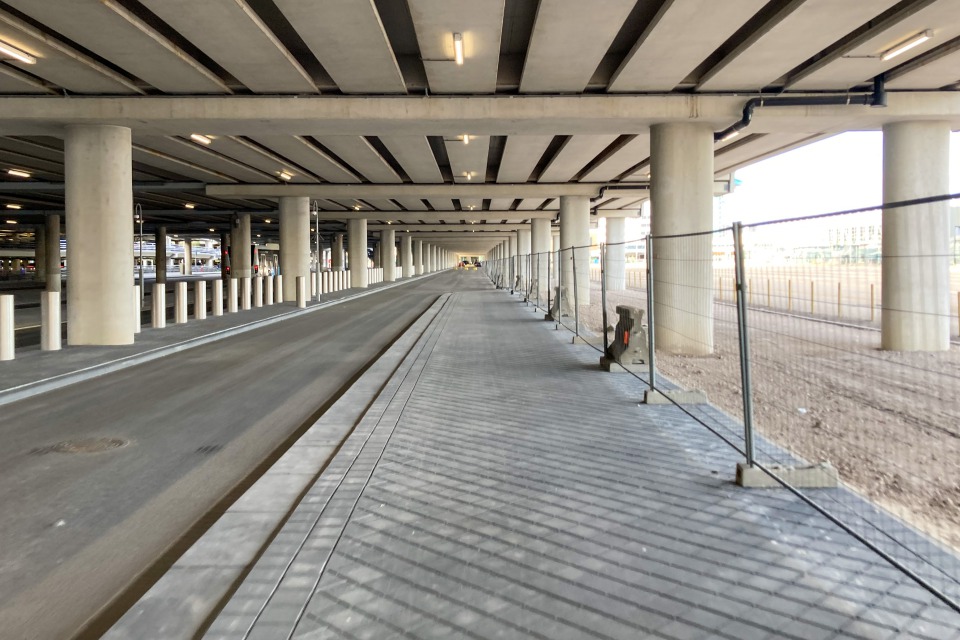
32. Taxi Buffer
There are only fourteen taxi stands at Plaza. When those are full, the drivers have to wait in the buffer zone next to the Total petrol station. At least, the lucky ones who drive for the right companies, like BIOS and STC. The rest have to resort to P41, on the north side of Schiphol.
There is no official cycle path here, but the elevated Ceintuurbaan Zuid, which is flanked by three- and four-deck parking garages, has wide pavements. Walk or cycle the half kilometre through the concrete belly of Schiphol to Plaza.
Route, text & Photos // Tijs van den Boomen Map // Studio Alexander Beeloo Translation // Willeke van Ravenhorst
Where to get your own map?
- Planes@Plaza: A Shop at Schiphol Amsterdam Airport
- Het Cultuurgebouw.
- Front desk of The Farm Kitchen (in the Pharos building, next to Hoofddorp Station
- Stevens Bookstore in Hoofddorp.
A cycle route by Podium voor Architectuur Haarlemmermeer en Schiphol © 2021




